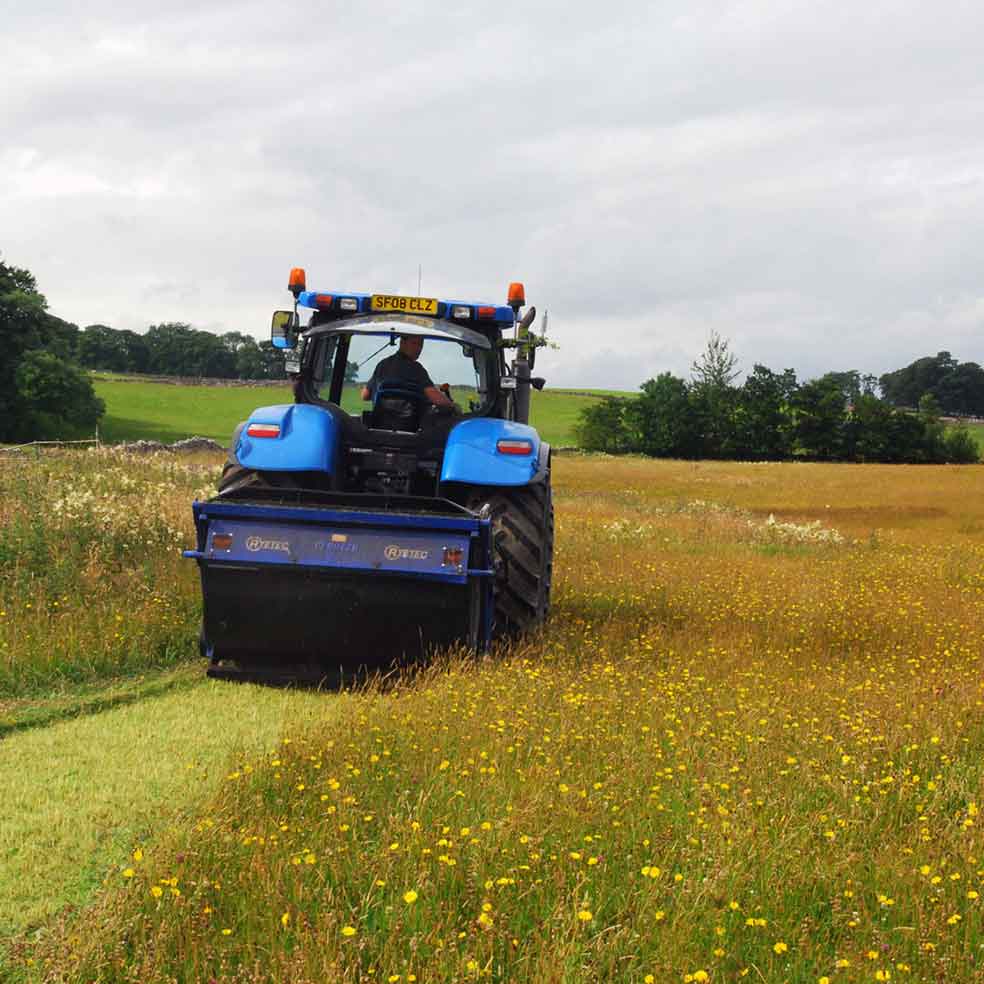How meadow restoration works
Hay meadows are nationally important as high nature conservation value areas and are an integral part of upland farming. But over the last fifty years 97% of our meadows have been lost, largely due to an intensification in farming methods.
Even here in the Dales, where we have some of the best remaining upland hay meadows in the UK, fragmentation of these habitats into small, isolated sites has resulted in a dramatic loss of biodiversity.
The Hay Time project was set up to co-ordinate hay meadow schemes in the Yorkshire Dales and Forest of Bowland using locally-harvested meadow seed to restore ‘degraded’ meadows to their former species-rich condition.
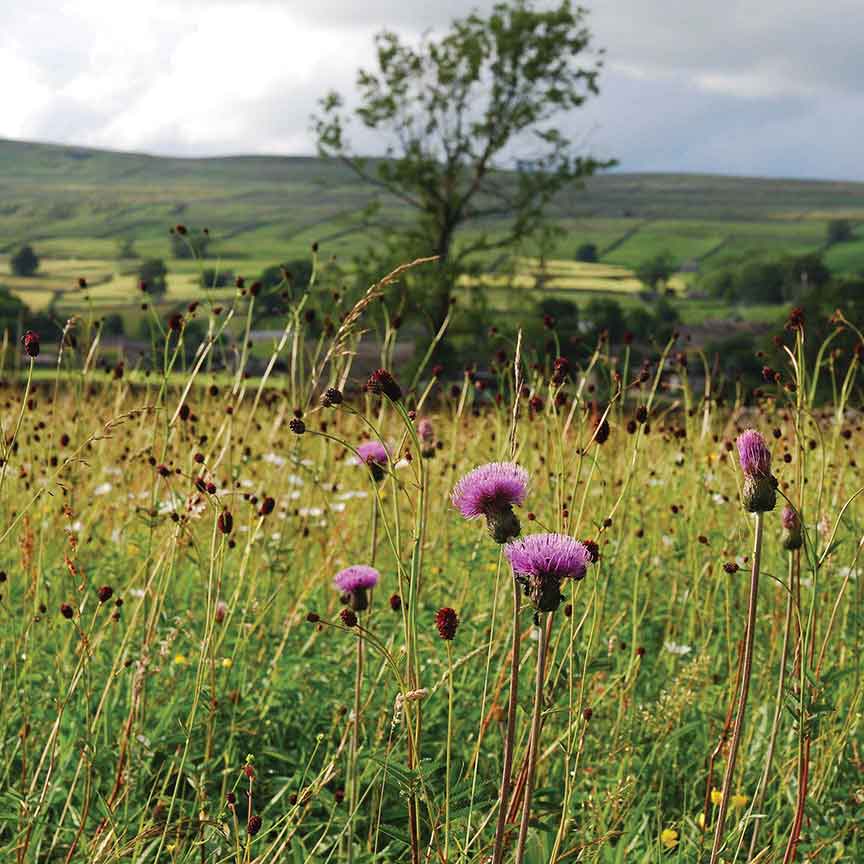
Meadow Restoration
Meadow restoration depends on the direct addition of seed harvested from carefully selected species-rich sites. Seed addition is a complicated process that requires careful co-ordination: identifying and matching suitable seed donor sites with receptor sites, co-ordinating trained contractors, specialised seed harvesting machinery, and volunteers, and ensuring appropriate site preparation, after-care and management.
YDMT was one of the first organisations to use this technique for grassland restoration on a landscape-scale, and we continue to work closely with farmers and landowners who want to restore or create meadows or act as meadow seed donors.
Using green hay transfer to restore meadows
Green hay is the preferred method of restoration as it collects a large quantity of seed from the widest range of plants, and is least affected by wet weather – a key factor in our corner of the world! Other methods of harvesting and spreading are also used depending on the location and nature of the donor and receptor meadows.
Here’s our step-by-step guide to green hay transfer.
Step 1: Matching donor and receptor meadows
We start off by matching a species-rich ‘donor’ meadow with a ‘receptor’ meadow that needs to be restored.
The receptor meadow is a more intensively managed meadow where species numbers have declined.
The donor meadow is a species-rich, traditionally managed meadow, where seed can be harvested from.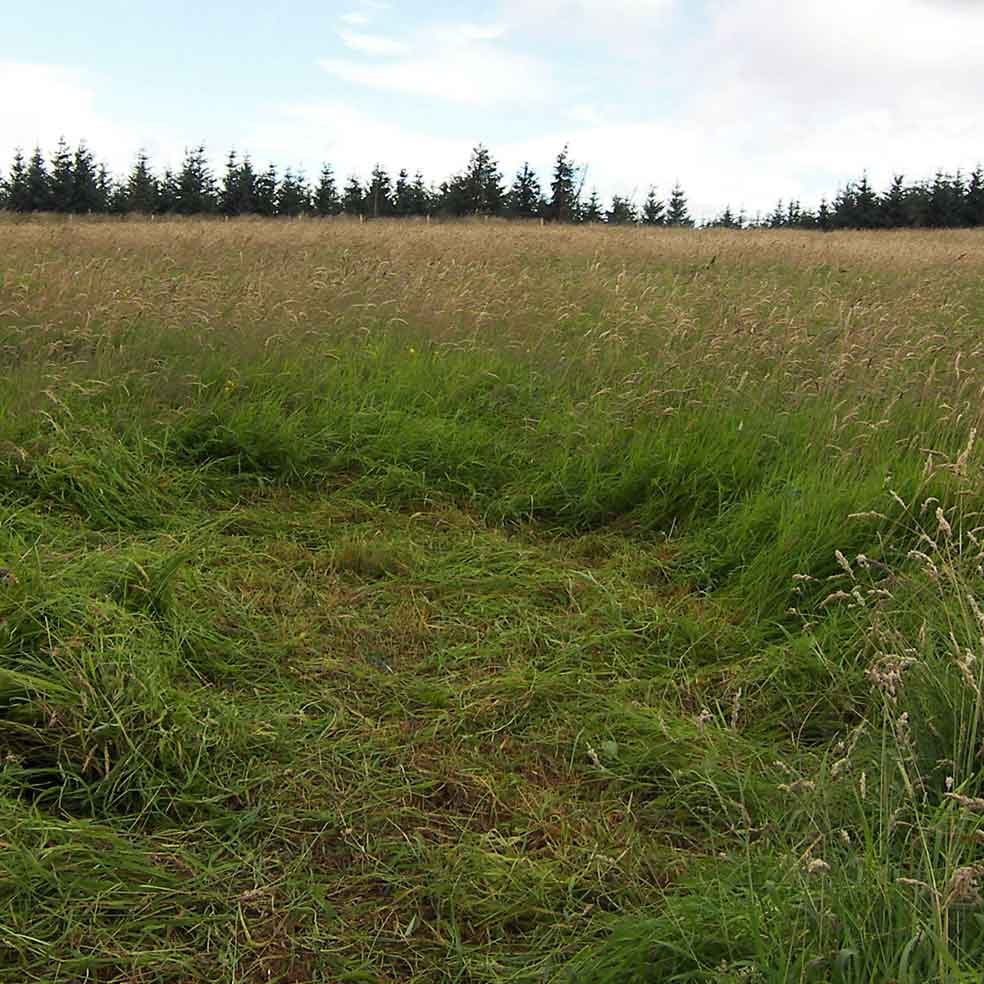
Receptor meadow
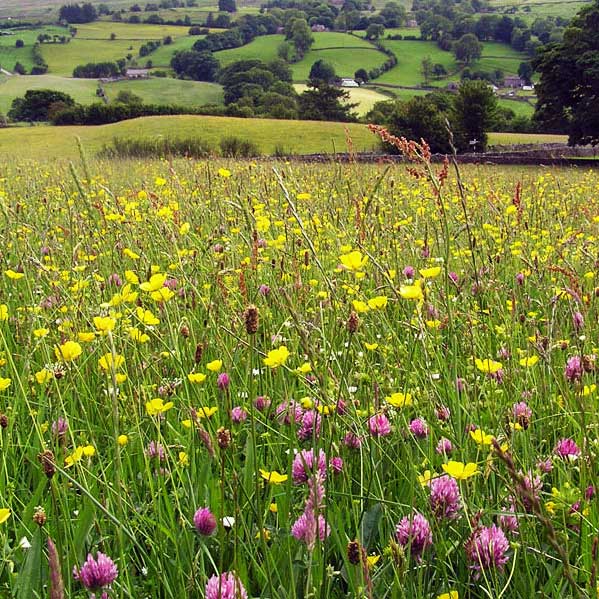
Donor meadow
Step 2: The receptor meadow is cut, cleared and harrowed
Step 3: Green hay is harvested from a specified area of the donor meadow
Step 4: Green hay is spread on receptor meadow
The hay is transported immediately to the receptor meadow and spread. Seeds then fall as the hay dries, introducing a variety of traditional meadow species.
Green hay harvesting
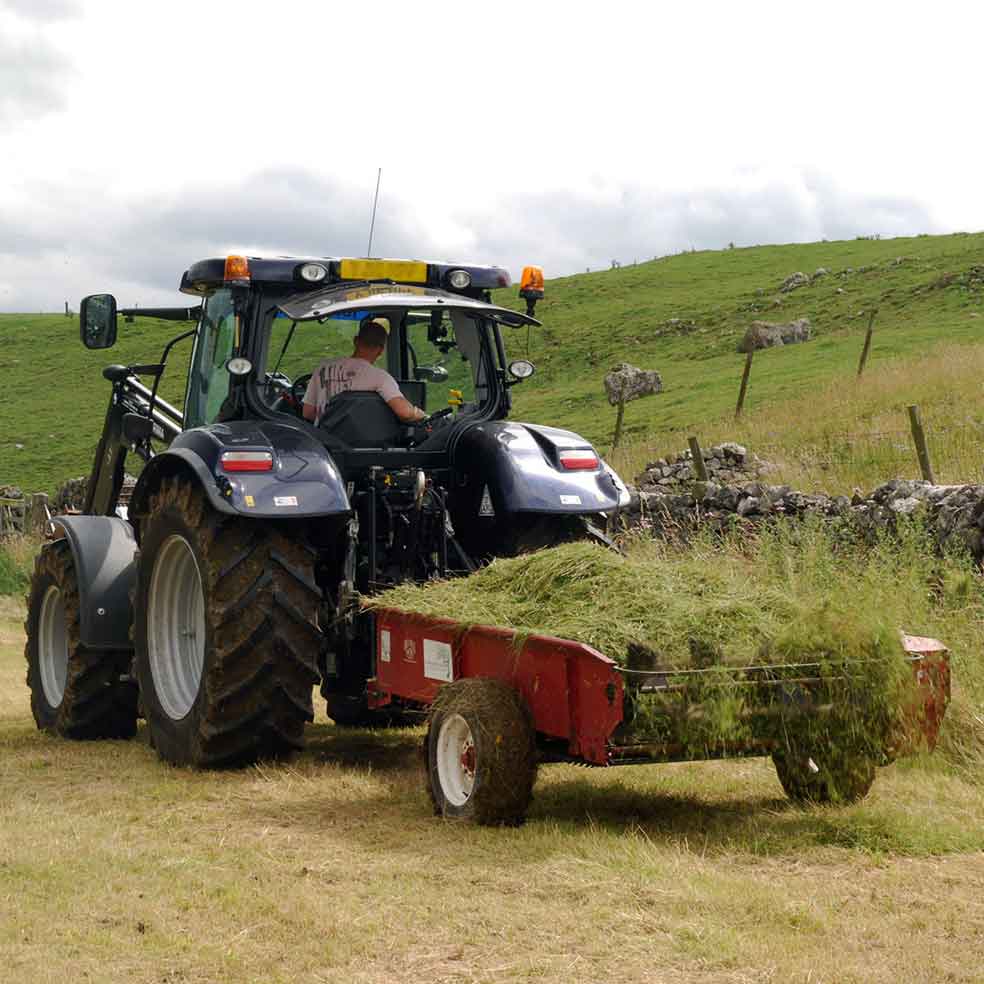
Green hay spreading

